We Are In Tierra Del Fuego (Page Two)

Sixteen plus hours of flying to get the the bottom of the world!

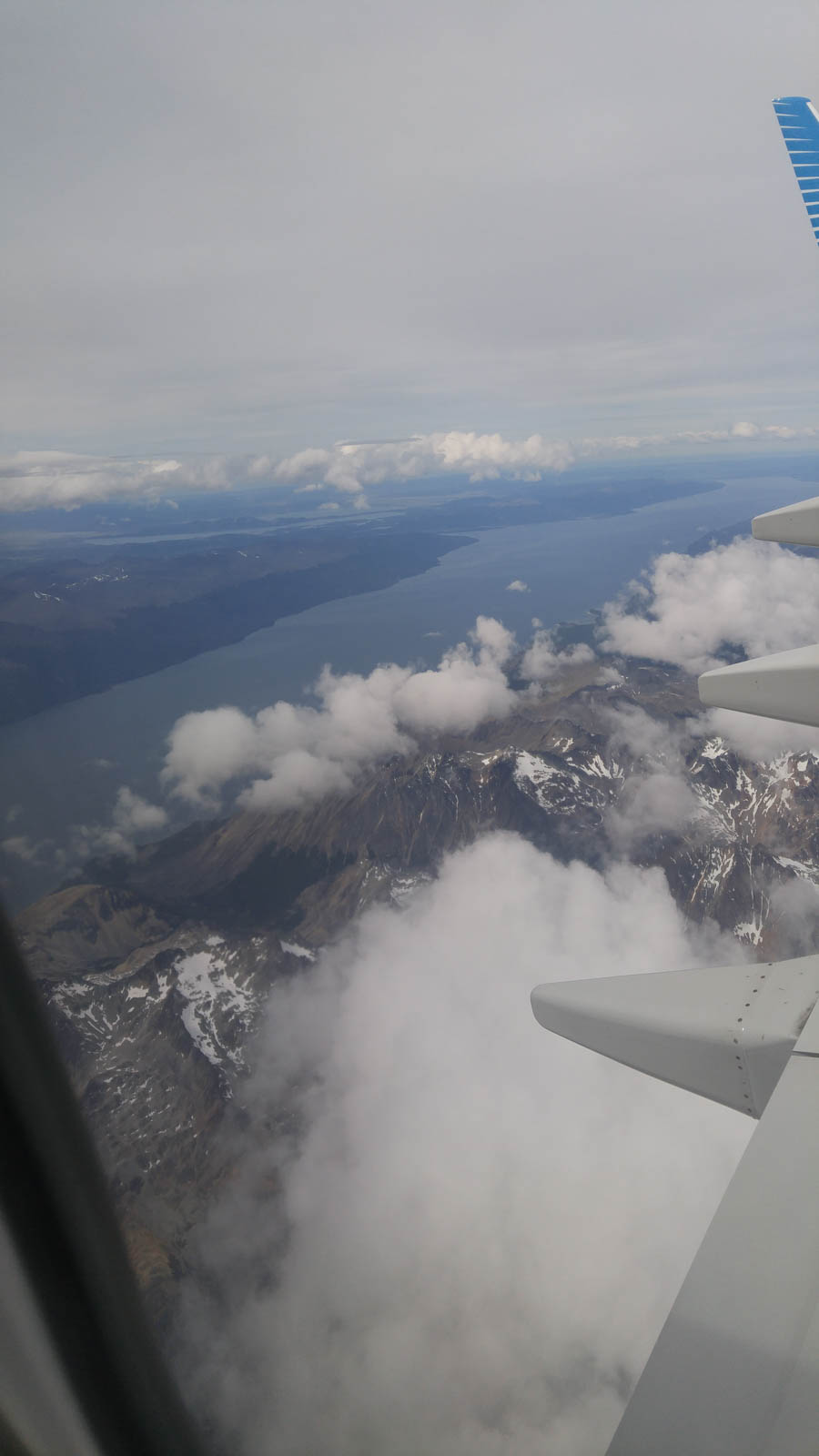
Up up and away!
20+ hours in the air and changing
airplanes and we are almost here!

Some civilization appears out of the winter clouds

Lowering in altitude, we will be on the ground soon!

Malvinas Argentinas Airport, Ushuaia, Tierra del Fuego, Argentina
Did You Know? - This small international airport was opened in 1995, replacing an older one. The airport has been used by various distinct airlines at different periods. It is the world's southernmost international airport and is often used by passengers as a cruise-ship gateway to the Antarctic.
Ushuaia International Airport is fit to receive airplanes as large as the Boeing 747. Tower Air used to operate such types into the airport, and Aerolíneas Argentinas operated 747-400s into the airport during events of high passenger numbers (such as entire cruise-ship passenger payloads) until retiring this aircraft type in February 2012.
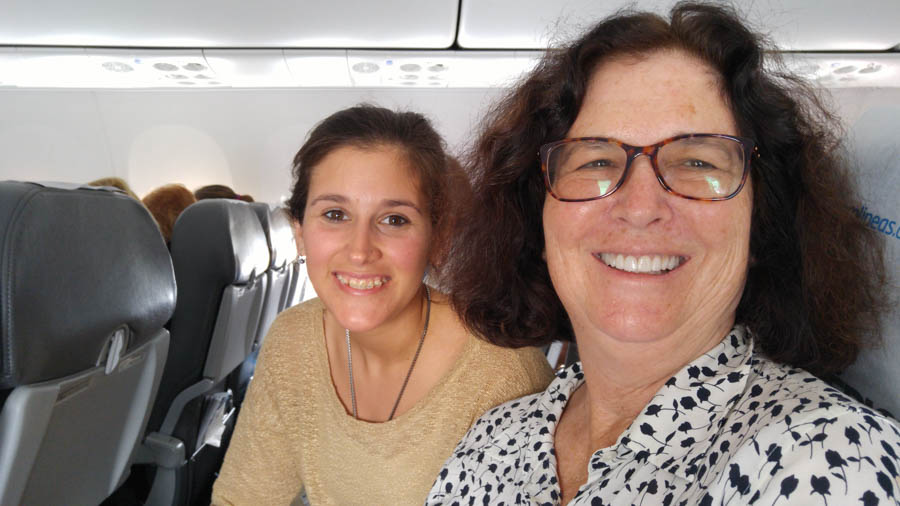
We made it... Take us to a hotel (the young girl is Puli Sanz who we met on the plane. She was from Ushuaia and recommended a tea house we will see later)

Our bus awaits

We get to see "down town" along our way!

Did we say there was wind?

The town marker

Just a little farther... That's what they always say when you are tired!
(I took this to show the forsythia blooming - although when we left Miami in November it was fall/winter, but in Ushuaia it's spring)
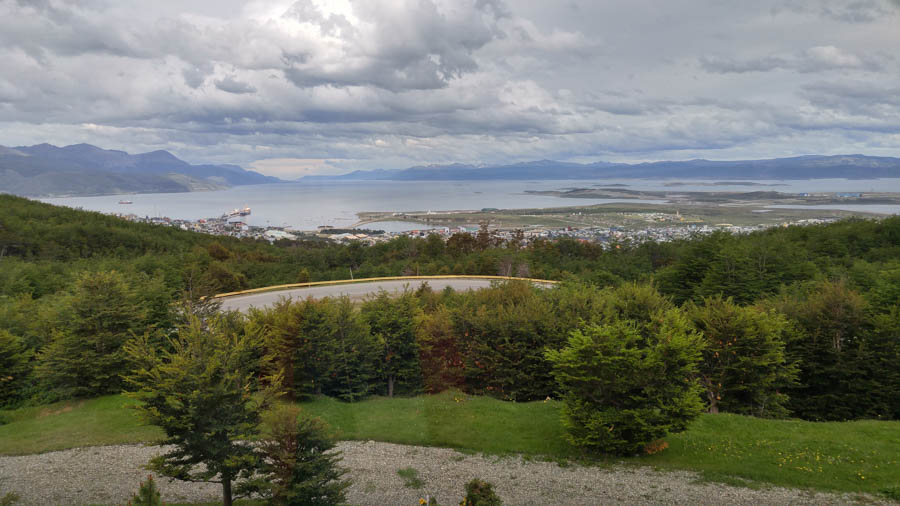
Looking back to town from the winding road to the hotel

Summer time foliage in November?

Fresh fruit abounds
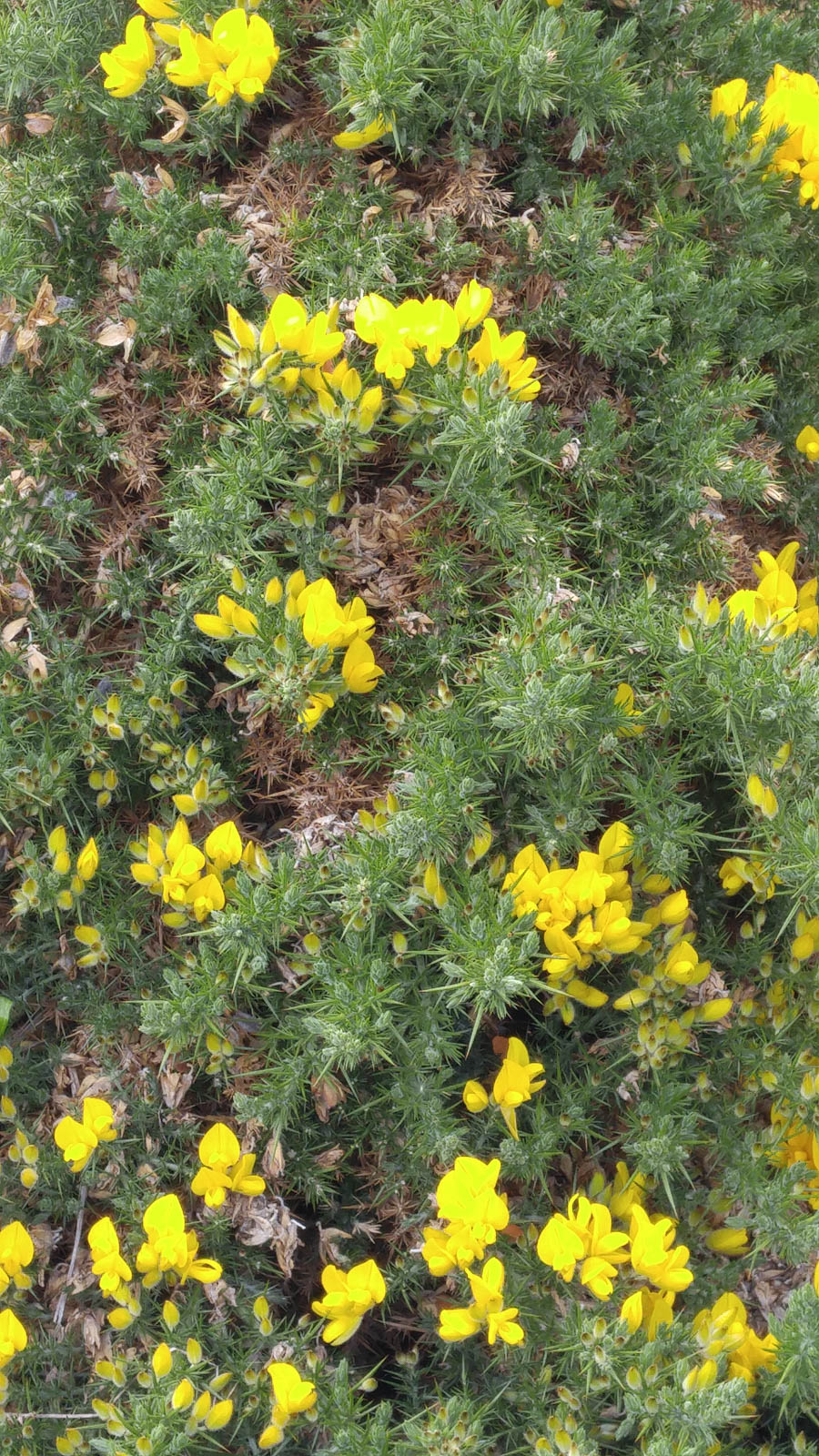
Love the bright flowers
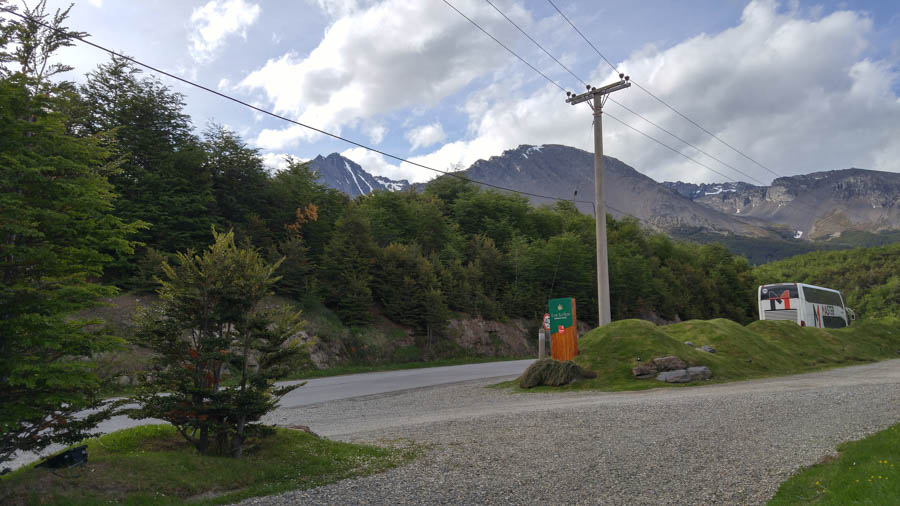
Busses traverse this road every few minutes

Just a bit of a view!
Did You Know? - Overlooking the Beagle Channel, this relaxed hotel is 6 km from the End of the World Museum and 10 km from the Southern Fuegian Railway, considered the southernmost railway in the world.
The channel was named after the ship HMS Beagle during its first hydrographic survey of the coasts of the southern part of South America which lasted from 1826 to 1830. During that expedition, under the overall command of Commander Phillip Parker King, the Beagle's captain Pringle Stokes committed suicide and was replaced by captain Robert FitzRoy. The ship continued the survey in the second voyage of the Beagle under the command of captain FitzRoy, who took Charles Darwin along as a self-funding supernumerary, giving him opportunities as an amateur naturalist. Darwin had his first sight of glaciers when they reached the channel on 29 January 1833, and wrote in his field notebook "It is scarcely possible to imagine anything more beautiful than the beryl-like blue of these glaciers, and especially as contrasted with the dead white of the upper expanse of snow.

Welcome!

Our view was spectacular
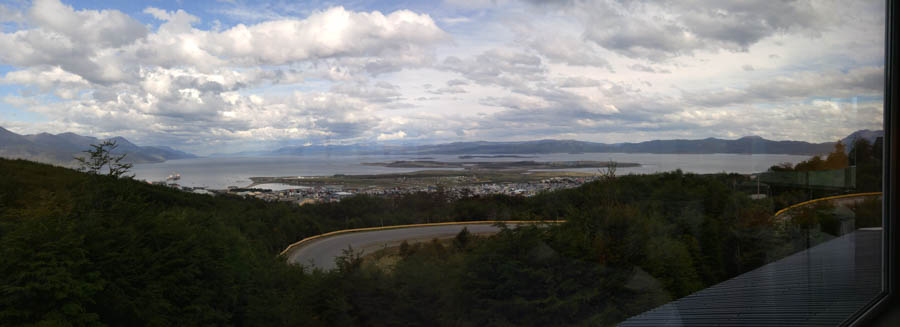
A panorama of the bay from the road to our hotel
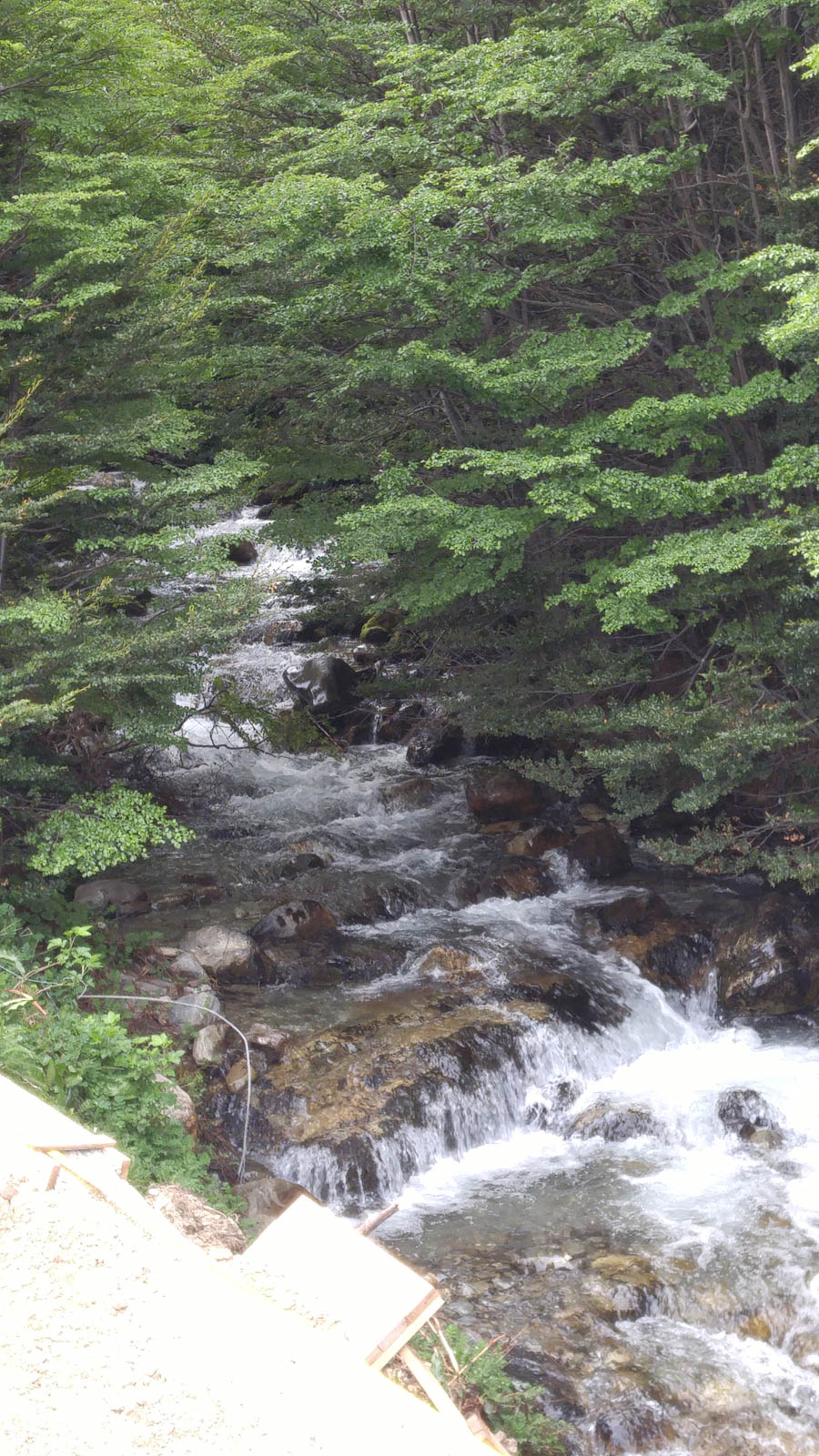
Water everywhere... We wondered why?
Did You Know? - This region has a subpolar oceanic climate (Köppen climate classification Cfc) with short, cool summers and long, wet, moderately mild winters: the precipitation averages 3,000 mm (118 in) a year in the far west, but precipitation decreases rapidly to the eastern side. Temperatures are steady throughout the year: in Ushuaia they hardly surpass 9 °C (48 °F) in summers and average 0 °C (32 °F) in winters. Snowfall can occur in summer. The cold and wet summers help preserve the ancient glaciers.

Time for a pot of tea!
(We walked to the tea house for dinner and it rained on the way back which we weren't prepared for. The tea house had great food. I had a hearty stew - delicious)

It is almost 9 PM! Time to crash before we board tomorrow
